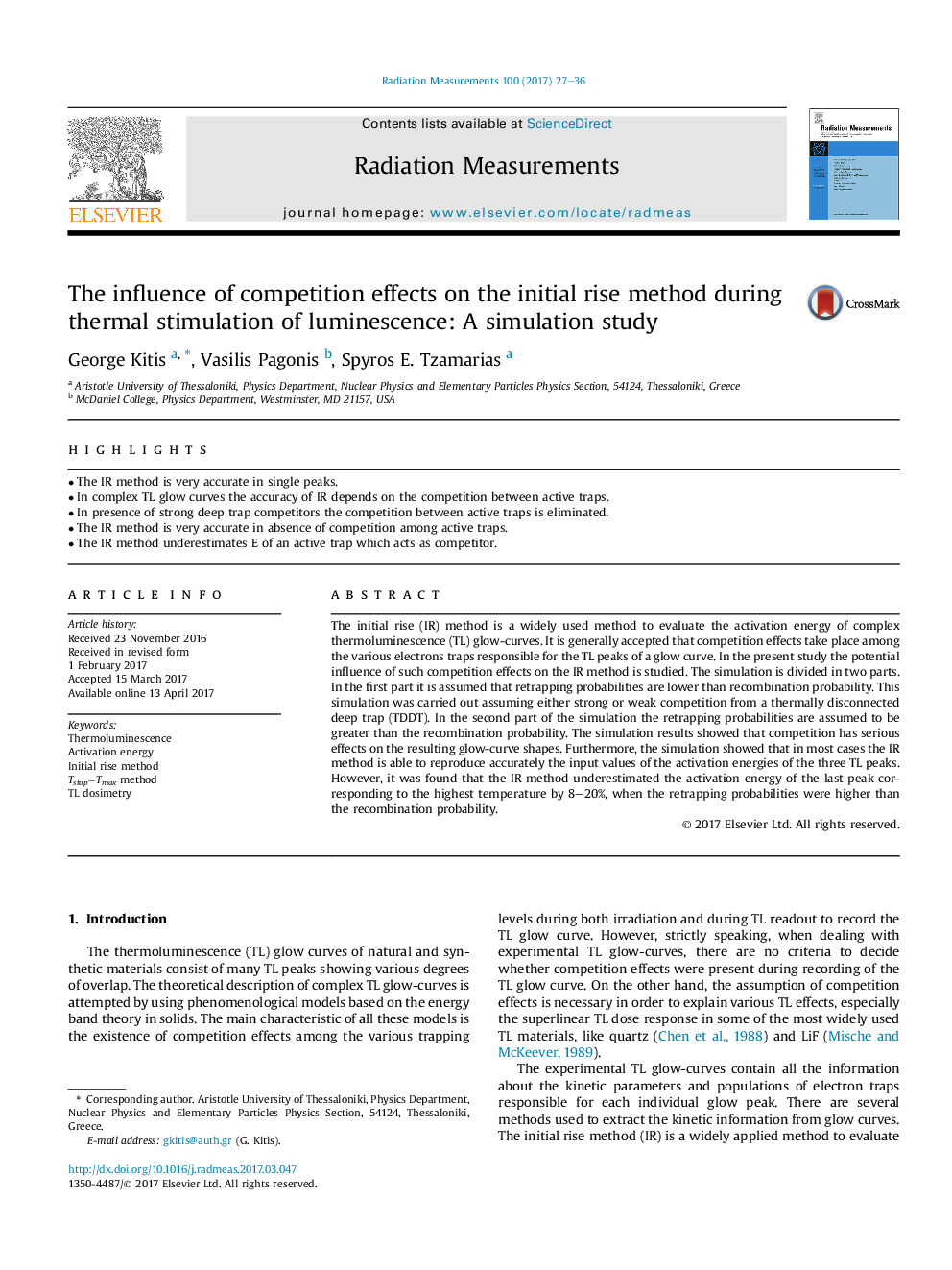| Article ID | Journal | Published Year | Pages | File Type |
|---|---|---|---|---|
| 5498915 | Radiation Measurements | 2017 | 10 Pages |
Abstract
The initial rise (IR) method is a widely used method to evaluate the activation energy of complex thermoluminescence (TL) glow-curves. It is generally accepted that competition effects take place among the various electrons traps responsible for the TL peaks of a glow curve. In the present study the potential influence of such competition effects on the IR method is studied. The simulation is divided in two parts. In the first part it is assumed that retrapping probabilities are lower than recombination probability. This simulation was carried out assuming either strong or weak competition from a thermally disconnected deep trap (TDDT). In the second part of the simulation the retrapping probabilities are assumed to be greater than the recombination probability. The simulation results showed that competition has serious effects on the resulting glow-curve shapes. Furthermore, the simulation showed that in most cases the IR method is able to reproduce accurately the input values of the activation energies of the three TL peaks. However, it was found that the IR method underestimated the activation energy of the last peak corresponding to the highest temperature by 8-20%, when the retrapping probabilities were higher than the recombination probability.
Related Topics
Physical Sciences and Engineering
Physics and Astronomy
Radiation
Authors
George Kitis, Vasilis Pagonis, Spyros E. Tzamarias,
